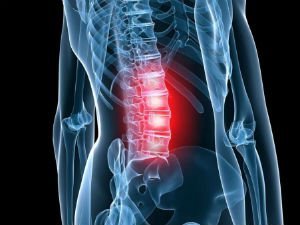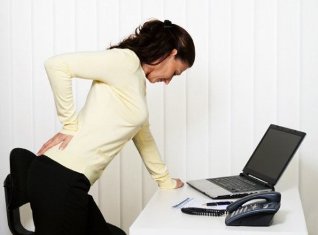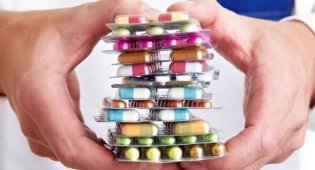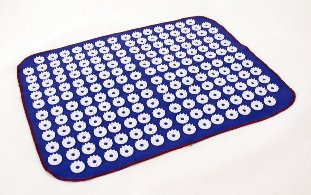
According to medical statistics, 80% of lower back pain is caused by lumbar osteochondrosis. When the intervertebral disc and adjacent vertebrae are affected, this occurs due to dystrophic changes in that segment. Lumbar osteochondrosis (OBOP) is manifested by a variety of symptoms: pain of different nature, restricted mobility, impaired sensitivity of the lower body, etc. If there is no treatment for a long time, the degeneration process will spread to the vertebrae, reducing the ability to work, and then the patient may lose the ability.
In order to avoid the dangerous complications of lumbar osteochondrosis (LP), you need to start complex treatment at 1-2 pathological stages. In advanced cases, the operation will be performed when there are already irreversible changes in the disc or vertebrae. In order to avoid lower back osteochondrosis and related complications, prevention is necessary.
The development of lumbar osteochondrosis
To understand what Lumbar Spine is, you need to study the structure of the spine. It consists of vertebrae, and cartilage pads (intervertebral discs) are placed between them. The intervertebral disc is covered with dura fibrous membrane (annulus fibrous), and the nucleus pulposus is inside. This structure has shock absorption function, making the spine more flexible.
Help. The lumbar section of the spine is under tremendous pressure every day because it can support the weight of the upper body. Therefore, the diagnosis of lower cervical spine osteochondrosis is more than that of cervical and thoracic spine.
When the spine is subjected to a fixed stress, the intervertebral disc shrinks and loses a lot of fluid, the height of the intervertebral disc decreases, and the distance between the vertebrae decreases. The cartilage lining becomes fragile, microcracks appear on its surface, and the nucleus pulposus protrudes through the gap over time. With further compression of the intervertebral disc, the outer shell ruptures and the gelatinous body falls off, forming a hernia. Then there is the pathological activity of the vertebrae, and the load on the adjacent segments of the spine increases.
Soon after, bone growth (osteophytes) began to form on the edge of the vertebral body. Therefore, the body tries to stabilize the spine.
Doctors divide lumbar osteochondrosis into four stages:
- 1 degree-The disc began to have problems, the central part was dehydrated, flattened, and cracks appeared on the outer shell. The current has been erased.
- Level 2-The cartilage lining sinks, the vertebrae are closer to each other and become more mobile, the muscles and ligaments around the spine droop. Pain occurs.
- 3 degrees-the formation of vertebral herniation, hernia and subluxation. Pain worsens, mobility is restricted, and sensitivity of the lower body is disturbed.
- Grade 4 osteochondrosis is characterized by the appearance of osteophytes, which may damage the spinal nerves and adjacent vertebrae. There is persistent pain, severe neurological diseases and other complications, which increase the risk of disability.
The easiest way to cure lower back rickets (stage 1), but it is very difficult to identify the disease at this stage. Conservative techniques are used to treat 2nd degree disc chondropathy. Surgery may be required in stages 3-4.
Help. According to statistics, OBO is more frequently detected in patients 30 years later. After 20 years, people often have pathological development. Approximately 80% of 60-year-old patients suffer from this disease.
Reason
To understand how to deal with osteochondrosis PKOP (lumbar s spine), you need to understand its causes:
- Regular static or dynamic loads on lumbar segments. People at risk for the development of osteochondrosis include office workers, professional athletes (weightlifters), porters, construction workers, etc.
- Poor posture, inappropriate posture for a long time.
- Genetic susceptibility, abnormal vertebral body formation. Such software includes young software-curvature of the spine caused by vertebral pathology.
- Spine injury.
- Hormonal imbalances, metabolic disorders, endocrine gland diseases, these diseases can destroy the metabolism of the waist.
- Age-related physical changes can cause disc wear.
- Bone tuberculosis, osteomyelitis (purulent inflammation of bone tissue), ankylosing spondylitis (inflammation of vertebrae and joints), rheumatoid arthritis, etc.
Diseases are usually caused by multiple reasons.
In addition, there are some factors that can cause the development of lumbar osteochondrosis:
- Overweight.
- Passive lifestyle, sitting for a long time.
- Regularly consume unhealthy foods (fat, fried food, candy, semi-finished products, etc. ).
- Lack of moisture and dehydration.
- Congenital structural diseases of the spine, such as extra vertebrae.
- Often wears uncomfortable high heels.
- During pregnancy, then the load on the spine increases.
- Suddenly refused to train professional athletes or over-exercise among people who had previously lived a passive lifestyle.
- Smoking, frequent and excessive drinking.
There are more factors that can trigger the process of lumbar degenerative dystrophy. For example, flat feet, frequent back hypothermia, frequent stress, sleep disorders, etc.

Symptoms
The symptoms of lumbar osteochondrosis are diverse, and they depend on the stage of the disease and the local area of the disease.
Physicians distinguish between reflex and compression syndromes (complex symptoms) in OBOR. The former appears when stimulating the adventitia receptors of the intervertebral discs, ligaments, and joint capsules, and the latter appears when nerve bundles, blood vessels and spinal cord are compressed.
Lumbar osteochondrosis has the following reflex syndrome:
- Low back pain. Sudden movement or fatigue causes pain in the waist. Move easily and the pain syndrome will aggravate, so the patient will freeze in one position. The muscles in the damaged area are very tight, and the pain will be more obvious when palpated. These performances are related to the movement of the nucleus pulposus in the shell.
- Lumbodynia. The pain lasts for hours or days. Discomfort increases with exercise, and body position also changes. When a person adopts a horizontal posture while rolling under the lower back, this feeling diminishes. When the leg is straightened in this position, the pain worsens (Lasse's symptom). Muscle tension is less than low back pain. The mobility of the lower back is restricted.
- Lumbar muscle pain. Pain (sharp or pain) spreads from the lower back to the lower body. During exercise, this sign has increased. Leaning on the back can relieve the pain. The muscles of the affected area are tense, and the pain syndrome is obvious on palpation.
The symptoms of compression syndrome depend on which parts of the waist are damaged. The characteristic symptoms are related to hernia, osteophytes, and spinal nerve compression caused by vertebral displacement. This condition is called radiculopathy, in which pain increases with minimal movement, muscles in the lower back tighten, and movement is restricted.
The clinical manifestations of compression syndrome depend on damage to the lumbar vertebrae:
- L1-L3-Lumbar area, pain and numbness in the front and inner thighs, the patient has difficulty bending/straightening the legs of the knees.
- L4-Pain syndrome extends to the front of the thigh and descends to the knee (rear). In the same area, sensitivity is disturbed.
- L5-The painful sensation radiates to the buttocks, the outside of the thigh, and descends along the front of the calf to the inside of the foot and big toe. In the same area, it feels numb and it is difficult for the patient to bend the big toe.
- S1- Pain spreads from the lower back to the buttocks, that is, the outside and back of the thigh, to the calf and the outside of the foot. In the same area, it feels numb and the muscles of the calf are weakened, making it difficult for the patient to stand on the toes.
may damage multiple nerve bundles at once, such as L5, S1. If the hernia moves back, it compresses the spinal cord.
Compression of blood vessels in the lower back increases the possibility of leg muscle weakness, numbness of the lower limbs, and poor control of urination and defecation. Men with OBO have impaired erections, while the main symptom in women may be inflammation of the ovaries or uterus.
Diagnostic measures
To diagnose OBO, the doctor examined the patient, palpated the patient to determine the muscle condition and determine the degree of curvature of the spine. It is important to inform the expert of your symptoms in detail to make it easier for him to diagnose.
Instrumental examination will help to detect intervertebral disc chondropathy:
- X-rays of the lower back (front and side projection).
- Computer and magnetic resonance imaging.
X-rays allow you to evaluate the structure of EPP. To detect abnormal mobility of the vertebrae, X-rays are taken in the flexion and extension positions. This study made us notice the narrowing of the intervertebral fissures, the displacement of the vertebral bodies, and the appearance of osteophytes on their edges. However, this diagnostic method is considered obsolete.
Nowadays, CT and MRI are increasingly used to detect degenerative dystrophy changes of the spine. These informative studies can assess the condition of vertebrae, intervertebral discs, foramen, and spinal cord. With their help, it can detect protrusions, hernia directions, nerve bundles, spinal cord and blood vessel compression.
Treatment
Medicines for lumbar osteochondrosis

EPP treatment of osteochondrosis lasts 1-3 months to 1 year. The success of treatment depends on the patient, and the patient must strictly follow the doctor's advice. Through self-medication, the patient's condition usually worsens.
Treatment goals:
- Stop or relieve software symptoms.
- Determine the cause of the disease and try to exclude it from life.
- Eliminate the inflammatory process.
- Restore blood circulation and metabolism of the lumbar spine.
- Try to improve the condition of damaged cartilage lining to prevent further degeneration.
To achieve these goals, complex treatments are recommended. Usually start with medication:
- Muscle relaxants. They can relax muscles and reduce pain and inflammation.
- NSAID. They have anti-inflammatory, analgesic and antipyretic effects.
- Antispasmodic. They help prevent smooth muscle spasms and relieve pain.
- Anesthetics. They are used in severe pain syndromes in the form of therapeutic blockade.
- Glucocorticoids. They also help relieve pain. However, these drugs have the ability to destroy bones, so they should only be taken for a short period of time after obtaining doctor's approval.
- Sedatives. They relieve neuromuscular tension and improve sleep.
- Vitamins (groups B, E, C, A). Restore the condition of the affected nerve and relieve pain.
Be careful. NSAIDs should not be used for gastritis or gastric ulcers because they will further damage the mucous membranes of the gastrointestinal tract.
If the condition gets worse, give the patient an injection and take oral medication after the main symptoms are relieved.
In addition, external agents (gels, ointments, creams, friction agents) are also used.
The question of what to do in the case of chronic low back osteochondrosis is very important. If OBOP has become a chronic disease, after alleviating the main symptoms, the patient will be prescribed chondroprotective agents, drugs to restore blood circulation, and vitamin B-based drugs. They help restore innervation, normalize the blood supply to the diseased area and prevent further pathology.
The treatment of lumbar spine chondropathy (stage 1) is carried out by using chondroprotective agents, which can slow down the development of the degeneration process and accelerate the regeneration of cartilage. In addition, a vitamin and mineral complex is prescribed for patients. This osteochondrosis is the easiest to cure.
Other conservative technologies
If an acute chronic disease of 1-2 degrees (osteochondrosis) occurs, the following treatment procedures will help prevent its development:
- Ultrasound therapy can reduce pain and inflammation, and normalize blood flow in the damaged area.
- Due to the body's own weight, extensor therapy is a safe traction on the spine. After that, muscle tension returns to normal and mobility is improved.
- Magnetic therapy can reduce the pain and inflammation of the muscles around the spine.
- Reflexology (the insertion of a needle into the biologically active point of the body) can speed up blood circulation and relieve inflammation and edema.
- Manual therapy (use the doctor’s hand to affect the affected area) and massage can restore normal muscle tension, reduce the compression of nerve bundles, improve the nutrition of the intervertebral disc, and restore the structure of the spine.
- Electrophoresis allows drug solutions to be delivered through the skin to bone and cartilage tissue.
- Skin turner effect can improve blood circulation, metabolic process, relieve pain and restore skin sensitivity.
There are many more effective procedures that can help patients with 5-15 courses of treatment. The most important thing is to get the doctor's approval before the execution of the doctor.
Use software for processing at home
If you want to know if OBO can be treated at home, please consult your doctor. If you get permission from a specialist, start treatment, which usually includes the following:
- Eating. If lumbar osteochondrosis is caused by blood flow or metabolic disorders, please exclude fat, fried, spicy food, eggs, etc. from the menu, and add fresh vegetables, fruits, lean meat, fish, and dairy products to the menu. Give up alcohol, nourishing drinks (tea, coffee). Drink filtered water, preserves, and herbal tea.
- To restore blood circulation, exercise or rub and press.
- Sleep on orthopedic mattresses and low pillows. If you have a sedentary job, buy a backrest chair that can support your spine. Wear special corsets or belts from time to time.
- Exercise therapy will help strengthen the muscle corset and reduce part of the burden on the diseased spine. Each patient’s complex is individually prepared by a doctor or instructor.
- Self massage the waist area. However, ask professionals about the correct approach.
- Use folk remedies, such as rubbing, pressing, bathing, etc.
- Needle applicator is a plastic plate with many thorns, which can improve blood circulation, metabolism process in damaged area, relieve muscle pain and relax.

At home, you can also use lotions with herbal soups and plasters.
Help. The massage table is a novel way to treat osteochondrosis, even for the most disorganized patients.
However, please remember that home treatment is only possible with the permission of your doctor.
Surgical treatment
If conservative techniques are not effective for a long time, surgery for lumbar spine chondropathy is required. It also pointed out surgical interventions for involuntary urination, defecation, and cauda equina syndrome (compression of the lower spinal cord).
The following surgical methods are used for OBO treatment:
- Spinal Fusion-Fusion of adjacent vertebrae.
- Facial muscle incision-removal of the intervertebral joints pinching the spinal nerves.
- Laminectomy is the removal of the lamina that covers the spinal canal that compresses the spinal cord.
- Discectomy refers to the removal of all or part of the intervertebral disc, resulting in compression of the nerve root or spinal cord.
- Autopsy-removal of the vertebral body and adjacent cartilage pads. Then fill in the blank space with bone graft and fuse 3 vertebral segments.
Help. After surgery, there is a risk of complications: spinal cord injury, nerve bundle, graft break, infection, etc.
After treatment, you need to recover to speed up the recovery.
Complications
Without proper treatment, the risk of such complications of lumbar osteochondrosis is increased:
- Herniated disc, nerve root or spinal cord compression.
- Prolonged inflammation increases the possibility of radiculitis (inflammation of nerve roots).
- Sciatica (sciatic nerve inflammation), severe pain and numbness in the lower limbs.
- In the case of impaired blood circulation in the spinal cord, the possibility of compressive myelopathy is increased (various forms of compression of the spinal cord: bone fragments, hernias, tumors, hematomas).
- Cauda equina syndrome-compression of the root of the lower spinal cord, resulting in damage to the intestines, pelvic organs and lower limbs.
To avoid such complications, you need to start treatment as soon as possible.
Prevention
To avoid osteochondrosis of the lumbar spine, please follow the following rules:
- Maintain a moderately active lifestyle (walk more, exercise regularly, register for the swimming pool).
- For sedentary work, please warm up every 1. 5 hours.
- Sleeping on an orthopedic mattress.
- Avoid excessive force, only lift heavy objects from a squat position, and then fasten a special seat belt on your back.
- Buy orthopedic shoes.
- Eat the right diet and take vitamins and minerals as prescribed by your doctor.
- Learn to relax.
- Try not to lower your body temperature.
- Timely treatment of diseases that can cause OBO.
- Give up bad habits.
By following these suggestions, you can avoid degenerative changes in your spine and improve your health.
The most important
If you find symptoms of lumbar osteochondrosis, please seek medical attention immediately. Self-treatment can worsen your condition and cause complications. Lumbar osteochondrosis (stage 1) can be treated with exercise therapy, physical therapy and chondroprotective agents. In the later stages, you can use drugs, massage, manual therapy, etc. If there is no positive reaction or neurological symptoms for a long time, the doctor may perform surgery. Patients must strictly abide by the doctor’s advice to speed up recovery.






































